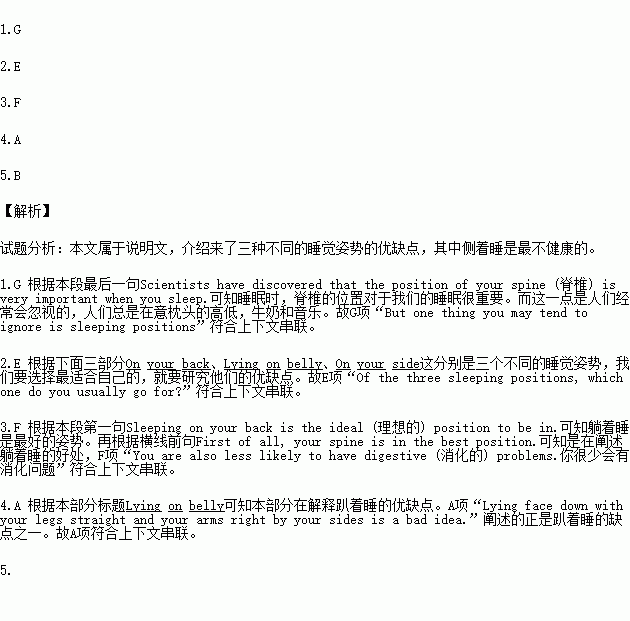题目内容
根据短文内容, 从短文后的选项中选出能填入空白处的最佳选项, 选项中有两项为多余选项。
How do you get a good night’s sleep?
You may put your pillow (枕头) at the proper height, drink a glass of hot milk or maybe listen to some light music before bedtime. 1. When World Sleeping Day falls on March 21, it will be a good time to explore a long-ignored fact that may make you feel tired after you wake up. Scientists have discovered that the position of your spine (脊椎) is very important when you sleep.
2. Let’s have a look at the advantages and disadvantages of each position.
On your back
Sleeping on your back is the ideal (理想的) position to be in. First of all, your spine is in the best position. 3. The downside is the greater likelihood of snoring (打鼾) and sleep apnea (窒息).
Lying on belly
4. Dr Vaclav Vojta, a US child development specialist, said this is bad for your back because it takes away the natural curve (曲线) of your lumbar (腰部的) spine. But he also noted that this helps to prevent some snoring and sleep apnea.
On your side
Sleeping on our sides happened naturally while we were in the womb (子宫). 5. Plus, sleeping on your side (the left side in particular) has been reported to reduce troublesome digestive problems like heartburn. The downside is the “dead arm” and finger numbness (麻木) from this position.
A. Lying face down with your legs straight and your arms right by your sides is a bad idea.
B. Sleeping on your side can be a quick fix for snoring and can help to improve breathing.
C. Do you and your friends ever talk about your sleeping position with each other?
D. And a new study suggests that the sleeping position has something to do with it.
E. Of the three sleeping positions, which one do you usually go for?
F. You are also less likely to have digestive (消化的) problems.
G. But one thing you may tend to ignore is sleeping positions.
 阅读快车系列答案
阅读快车系列答案
